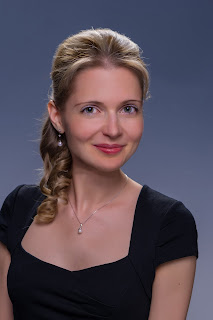Speaker:
Dr. Noémi Széll
Institution:
Ophthalmologie, Kenézy Gyula University Hospital of Debrecen Medical University, Debrecen, Hungary
Position:
Attending physician
Presentation Title:
Results with posterior scleral reinforcement for progressive high myopic children in Hungary
Abstract:
Purpose: We have been performing posterior scleral reinforcement in our Ophthalmological Department since 1992 on progressive high myopic eyes. Here we report on our results with this technique of the foregoing 7 years in a retrospective comparative design.
Methods: 38 eyes of 32 patients, operated according to Snyder-Thompson’s method, were enrolled in this study, and a control group of 9 age- and myopia-matched children’s 14 eyes was built for comparison. Pre- and postoperative best corrected visual acuity, subjective refractive error (spherical equivalent of spectacle dioptres) and axial length were recorded. Changes within groups were calculated as well as baseline parameters and their changes during follow-up were compared between the groups. Correlation analysis was performed to identify factors that could influence myopia progression.
Results: Myopic progression was significantly lower in the operated than in the non-operated group, both in terms of mean annual axial length – as well as refractive error- changes (0.21±0.08 mm versus 0.49±0.19 mm and 0.18±0.29 D versus 0.6±0.33 D, respectively). Mean overall visual improvement was more explicit in operated eyes as compared to those left untreated (0.15±0.09 versus 0.01±0.1). No association of any factor with myopia progression could be identified. We encountered no serious and lasting complications.
Conclusion: In our clinical practice, posterior scleral reinforcement according to Snyder- Thompson proved to be a safely applicable and effective surgical method to stop or significantly retard pathological axial length- and dioptre- increase, and thus prevent the onset of myopic degenerative lesions, and irreversible visual impairment in the long run.


沒有留言:
張貼留言